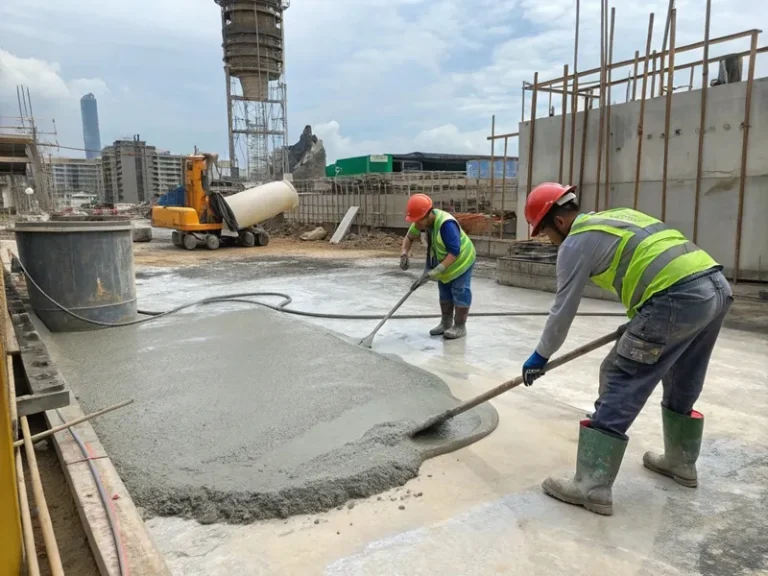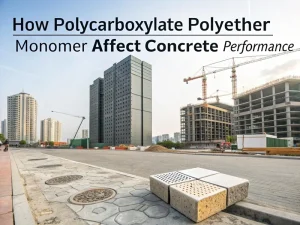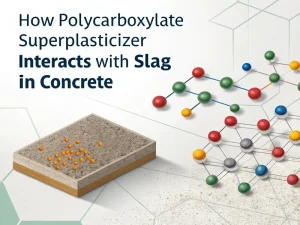Blog
In the construction industry, achieving strong and feasible concrete is a balancing act. Excessive water will weaken concrete, too little will make pouring and forming difficult. This is where high-efficiency water reducing agents come into play. But what is super plasticizer, and how does it change the performance of concrete?
This article will provide a detailed introduction to its definition, working principle, types, applications, and why it is indispensable in modern architecture.

Super plasticizer is a chemical admixture added to concrete or mortar, which can significantly reduce the required amount of water while maintaining or improving workability. Unlike traditional plasticizers (which can reduce moisture by 5-15%), super plasticizers (also known as high-efficiency water reducers) can reduce moisture by 15-40%, hence they are called “super”.
Simply put, a superplasticizer is a chemical admixture that can give concrete extremely high fluidity without increasing additional water usage. Alternatively, it can significantly reduce its water usage while maintaining the workability of the concrete.
This seemingly simple ability has solved a century-old core contradiction in concrete technology and paved the way for creating taller, stronger, and more durable building structures.
To understand the importance of high-efficiency water reducing agents, it is first necessary to understand a basic principle of concrete: Water Cement Ratio.
Before the emergence of high-efficiency water reducing agents, engineers had to make a difficult trade-off between strength and workability. Do you want good liquidity? We need to add more water, but it will sacrifice strength. Do you want high intensity? We need to add less water, but the construction will become a nightmare.
Superplasticizer acts on the surface of cement particles, and due to electrostatic attraction, cement particles will naturally aggregate together.
Super plasticizers are classified according to their chemical composition, each with unique properties:
Most common: Due to low cost, reliable performance, and wide application.
Performance: Reduce moisture by 15-25% and improve processability for 30-60 minutes.
Most suitable for: general buildings (slabs, beams, foundations) and precast concrete.
Higher performance: It has better water reduction (20-30%) and heat resistance than SNF.
Application: High-strength concrete, structures exposed to high temperatures (such as industrial chimneys).
This is the latest generation and most outstanding high-performance water reducer. PCE not only works through electrostatic repulsion, but its molecular structure also has side chains, which can generate a “steric hindrance effect”, like holding small umbrellas between particles, further preventing them from approaching. This enables PCE to achieve superior water reduction and slump retention effects at lower dosages.
Polycarboxylate ether superplasticizer Advantages:
Reduce water content by 25-40% (highest among high-efficiency water reducers).
The working hours are longer (up to 2-3 hours), which is very suitable for large-scale projects.
Low dosage (0.1-2% of cement weight) and minimum slump loss (maintaining flow over time).
Usage: High-performance concrete (bridges, skyscrapers), self-compacting concrete (SCC), and green concrete (low-carbon footprint).
Natural source: derived from by-products of wood pulp.
Limitations: Poor effect (up to 20% water reduction), may cause air entrainment.
Purpose: Budget-friendly projects or projects that require moderate operability.
You may have heard of Plasticizer. The relationship between them is simple:
Superplasticizers are a “reinforced version” of plasticizers.
The water reduction rate is different: the water reduction rate of plasticizers is usually between 5% and 12%, while the water reduction rate of superplasticizers can easily reach 15% -30% or more.
Super plasticizer is used in almost all types of concrete projects, including:
Super plasticizers are a transformative additive that solves the classic concrete problem of balancing strength and workability. By significantly reducing the moisture content, it has improved strength, durability, and construction efficiency, making it an indispensable material for modern high-performance concrete projects.
It is precisely because of high-efficiency water reducing agents that we are able to construct modern buildings that challenge our imagination, achieve complex artistic forms, and ensure that these structures can safely and sustainably stand for decades or even centuries.
Can super plasticizers be used for all concrete mixtures?
Yes, but the dosage and type must be tailored to the project (e.g., PCE for high-performance requirements).
Will super plasticizers affect the setting time?
Some settings may be slightly delayed (beneficial for hot weather), while others are configured for normal or quick settings.
Is super plasticizers environmentally friendly?
PCE superplasticizer has a low content of volatile organic compounds, which can reduce the amount of cement used and make it more environmentally friendly than older models.

How Polycarboxylate Polyether Monomer Affect Concrete Performance
Blog How Polycarboxylate

How Polycarboxylate Superplasticizer Interacts With Slag In Concrete
Blog How Polycarboxylate